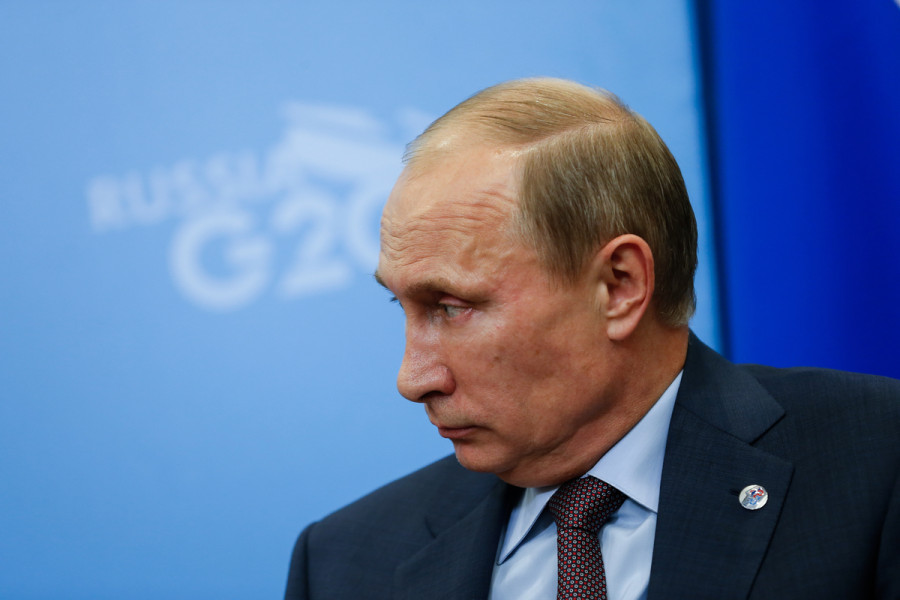Columns
Putin’s flatlining economy
Putin’s informational autocracy will be swept away by rising internet penetration.
Sergei Guriev
In recent weeks, macroeconomic forecasters have presented new, more optimistic global predictions for 2020 and 2021. Given the rising second wave of Covid-19 infections and deaths in much of the world, grimmer forecasts are likely to replace them soon. But even the relatively sanguine current outlooks provide little hope for economies like Russia, which was stagnating well before the pandemic.
To be sure, on September 30, Russia’s Ministry of Economy published a relatively sanguine official forecast: its baseline scenario is that GDP will contract by 3.9 percent in 2020, but will average 3.2 percent annual growth in 2021-23. Yet the ministry has a track record of being excessively optimistic.
Russia’s Accounts Chamber—another government agency, led by former finance minister Alexei Kudrin—criticised the Ministry of Economy’s bright forecast. The Accounts Chamber has a far more sombre outlook: a 4.5 percent decline in GDP in 2020, and average annual growth of only 2-2.2 percent in 2021-23. This is more closely aligned with the International Monetary Fund’s expectation of a 4.1 percent drop in 2020, and 2.4 percent annual growth in 2021-23 (slowing down to 1.8 percent by 2025).
The reason for the discrepancy among these forecasts is entirely political. When President Vladimir Putin began his current term in May 2018, he promised a rate of GDP growth higher than the world average, thereby expanding Russia’s share of the global economic pie. This is not a particularly ambitious target for a middle-income country. But Russia has failed to achieve it—and not just because of the Covid-19 crisis.
Well before the pandemic began, a broad consensus had emerged among Russia watchers that without institutional reforms, annual GDP growth rates would remain stuck at around 1.5-2 percent—lower than global growth. Putin’s government was clearly unwilling and unable to undertake such reforms. As a result, IMF forecasters have made clear, Russia’s share of the global economy—whether calculated in nominal terms or adjusted for purchasing power parity (PPP)—will continue to shrink in the coming years.
This clearly precludes Putin’s other much-hyped economic goal: to become one of the world’s top five economies. In nominal terms, Russia remains the world’s 11th-largest economy, and is unlikely to break into the top 10 in the foreseeable future. So Putin has been aiming to make Russia a top-five economy in PPP terms—a metric commonly used for evaluating living standards, not an economy’s overall size.
This goal would seem eminently achievable: in 2019, Russia ranked sixth in the world in PPP terms. No more. According to the IMF’s latest forecast, Russia will continue to lag behind Germany—which currently holds the fifth spot—in the coming years.
At this point, not even Putin can pretend that Russia has a chance of cracking the top five, and he dropped the goal in July, blaming the Covid-19 crisis. Of course, the entire world is confronting the same crisis, which implies that relative goals shouldn’t be affected.
Putin also announced that the 2024 deadlines for the targets he had set in 2018 were now shifted to 2030. Even here, the Covid-19 crisis is a poor excuse. After all, it is not as if Russia has implemented strict nationwide lockdown measures, temporarily sacrificing growth for the sake of public health. Putin did announce a six-week ‘non-working holiday’ last spring. But the state offered very limited economic support for small businesses and households during this quasi-lockdown. Totalling about 1 percent of GDP, Russia’s measures were an order of magnitude less than what the United States and Europe provided.
Unlike their Western counterparts when they faced lockdowns and shelter-in-place orders, Russians thus had little choice but to continue working—a fact borne out by Google mobility data. Putin then ended the partial lockdown early, in order to hold the vote on amending the Russian constitution to remove presidential term limits, thereby ensuring that he would never have to leave office.
The Kremlin’s soft-and-stingy approach to the pandemic saved the Russian state money. Despite lower oil prices, Russia’s rainy day National Welfare Fund stands at 12 percent of GDP—higher than at the start of the pandemic. But at what cost? It is impossible to know precisely, as Russia undercounts infections, misclassifies deaths, and delays reporting. Yet the increase in mortality, compared to past years, suggests that the numbers are huge.
By this measure, Aleksei Raksha, a former demographer at the Federal Statistics Service, says official data are underestimating Covid-19 mortality by a factor of three. With around 115,000 excess deaths in April-September, Russia could have a higher per capita Covid-19 mortality rate than the United States or any other European country. Given Russia’s relative isolation, this can be blamed only on policy.
These failures will have far-reaching implications for Russians and the world. With Putin’s regime unable to secure public support based on quality-of-life improvements, it will invest more in censorship, propaganda, and foreign adventurism. The Kremlin will try to convince Russians that, whatever his shortcomings, Putin is by far their best option—not least to confront external enemies. One can only hope that Putin’s quintessential informational autocracy will be swept away by rising Internet penetration and distrust of official media, making the official narrative increasingly difficult to sell.
—Project Syndicate




 17.12°C Kathmandu
17.12°C Kathmandu















